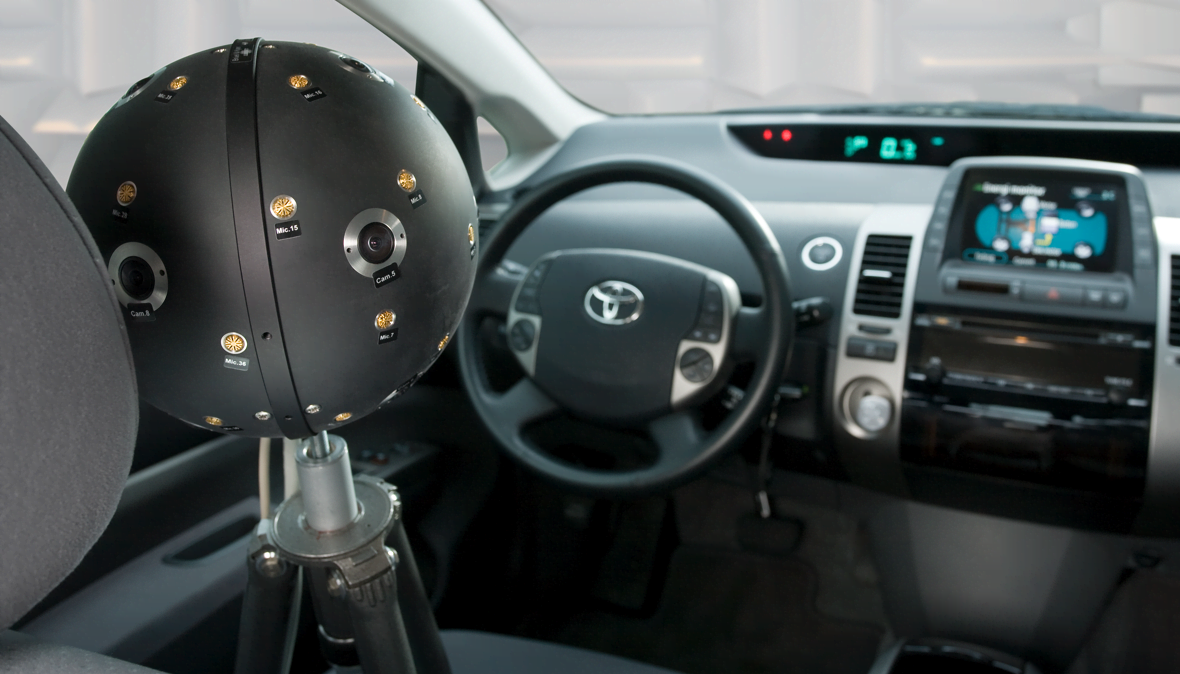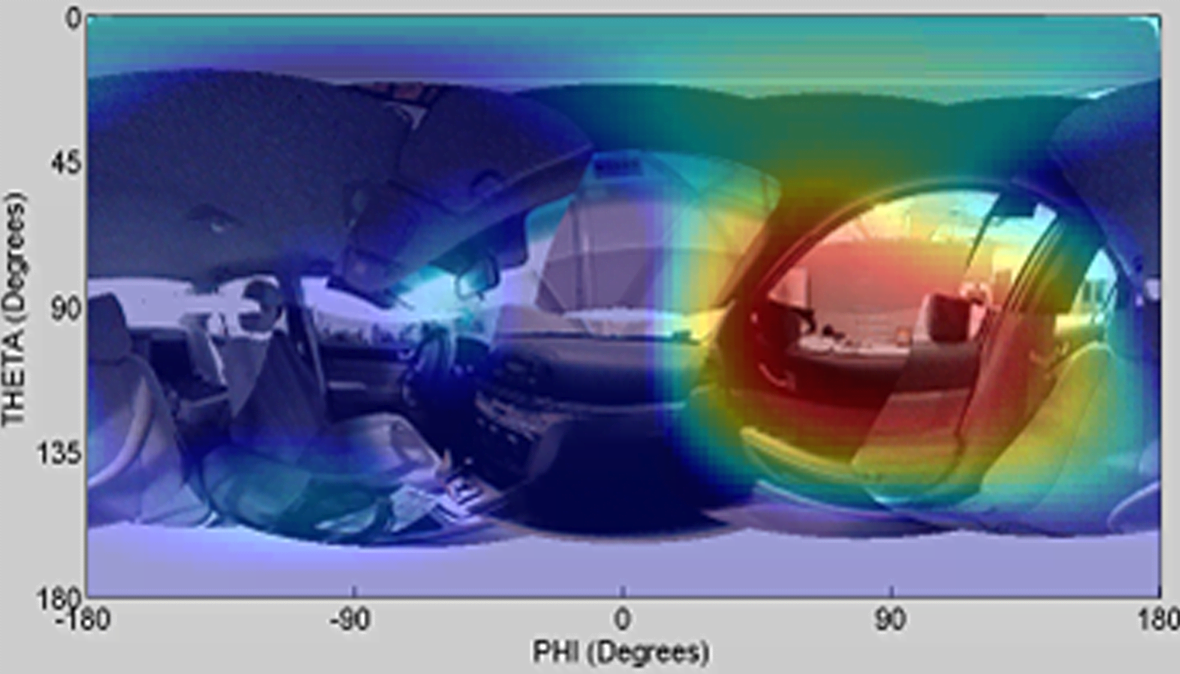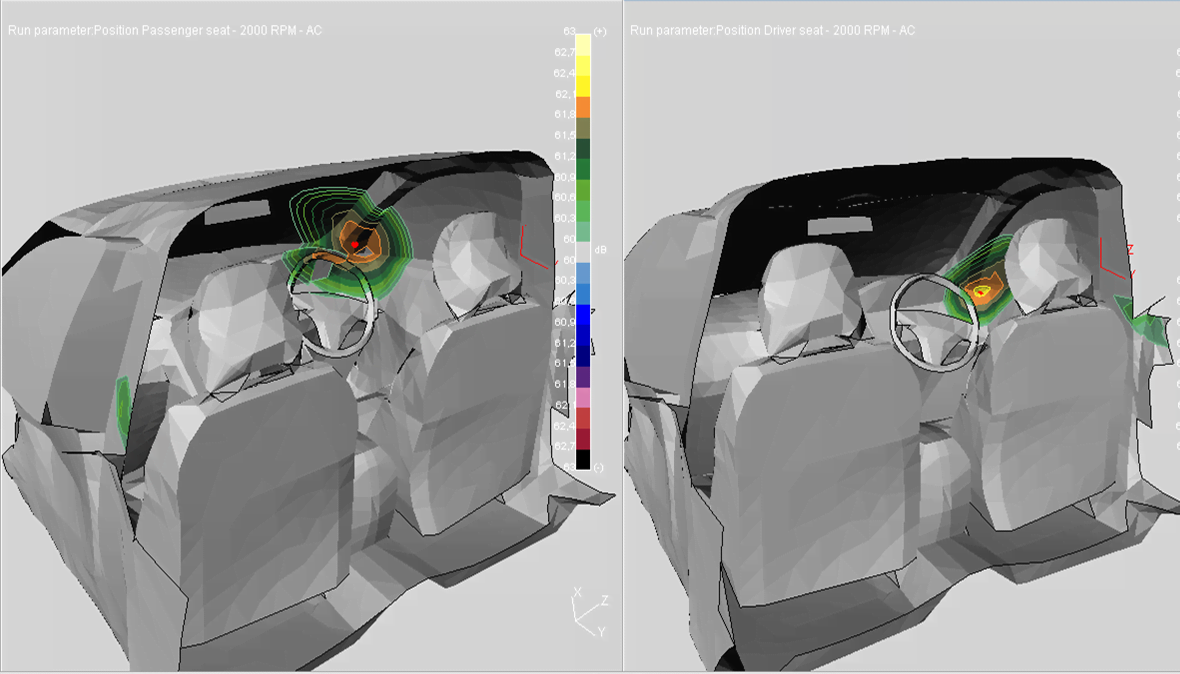TYPE 8606
Spherical beamforming software
Fast, one-shot noise source location of complete rooms or cabins in a 360-degree sound map overlaid on a photograph, using a spherical microphone array containing cameras.
Request PriceSpherical beamforming gives an omnidirectional sound map of a room or space from a single measurement. The spherical array measures the sound arriving on its surface from all directions, using up to 50 built-in microphones. At the same time, 12 cameras take photographs of the location, and the PULSE software then merges them into a single, two-dimensional representation of the sound field. The acoustic information is overlaid in coloured noise contours, so users can easily see the strength of the various sources.
USE SCENARIOS
- Vehicle interior noise mapping for acoustic leak detection
- Aircraft cabin interior noise investigation
- Buzz, squeak, and rattle (BSR) detection in vehicle cabins
- Sound distribution investigations in buildings
- Industrial plant noise identification
Unlike many acoustic measurements, a spherical beamforming system doesn’t require the user to make any assumptions about the sound field, so it works anywhere – in both free‐field and reverberant surroundings. This makes it effective for fast measurements in order to get a quick overview, in order to locate areas to focus on in more detail. Spherical beamforming is commonly used in confined and semi‐damped spaces such as vehicle and aircraft cabins. Here, the sphere is usually placed where people would experience the noise, such as the driver’s seat of a vehicle.
CAPABILITIES
- Quick snapshot measurements for an overview of any acoustic environment
- Omnidirectional coverage in one measurement
- Mapping of sound pressure, sound intensity, particle velocity and sound quality metrics
- CLEAN based on source coherence (clean-sc)
The system is ideal at mid- to high frequencies, and a low-frequency extension means that the system can be used over a wide frequency range. Spherical beamforming offers two calculation algorithms: an algorithm called spherical harmonics angularly represented pressure (SHARP) and filter and sum (FAS).
For more information on all of the extra options available including transient measurements, sound quality metrics calculations, see the page array acoustics options.




